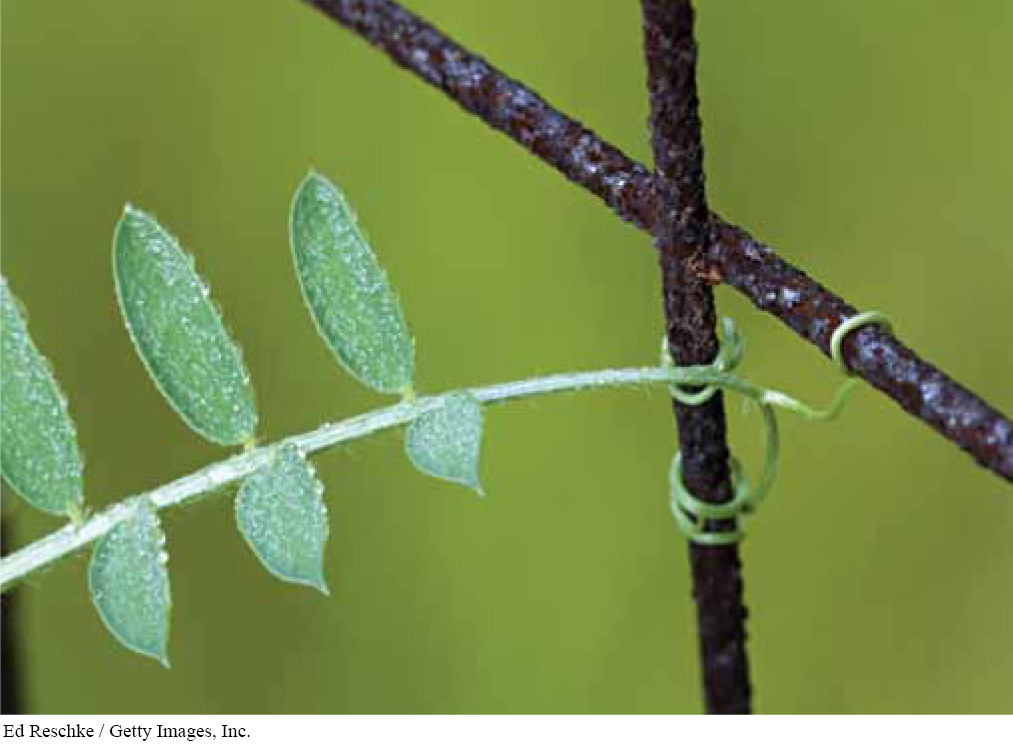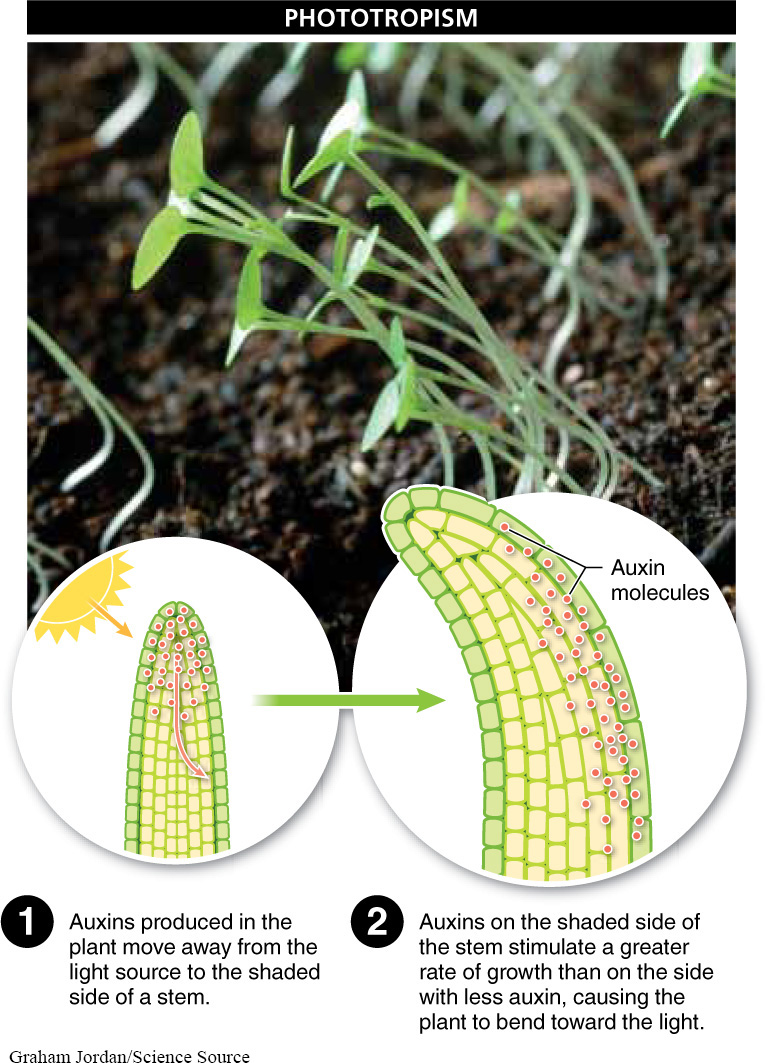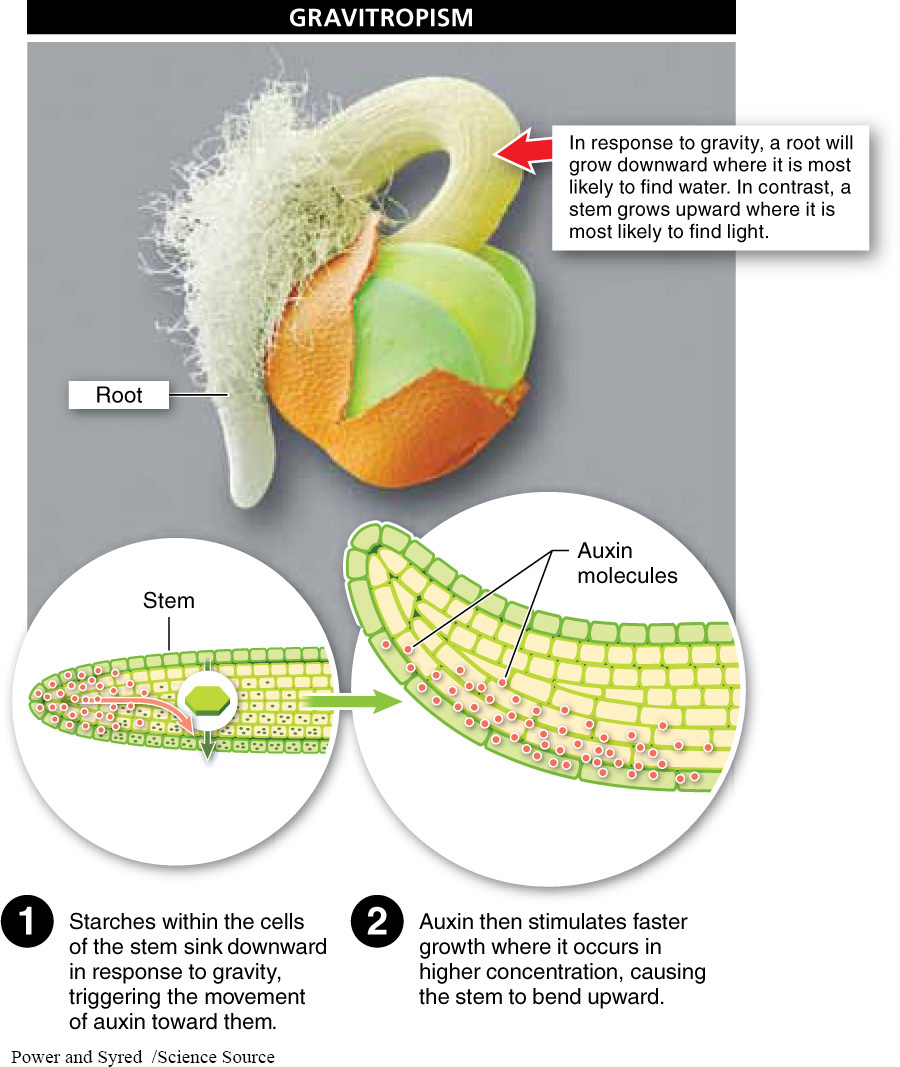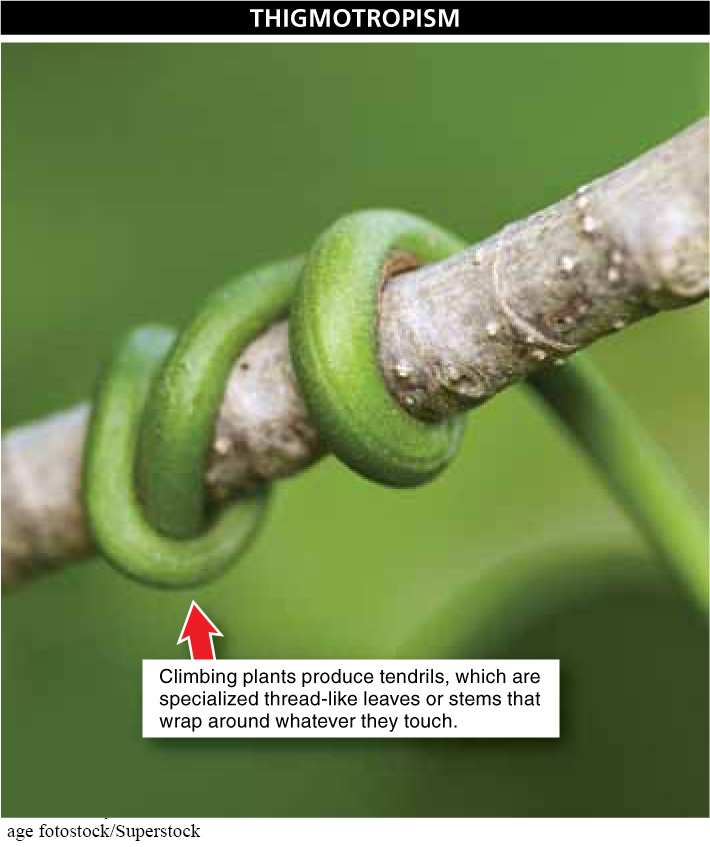
A plant’s immobility affects virtually every aspect of its structural design and function. Here we look at some of the evolutionary solutions that enable plants to grow, develop, and reproduce successfully while rooted in a single location. Like animals, for example, plants must respond to their environment as it changes. But whereas animals can move from a problematic, changing environment to one with more suitable conditions, plants instead grow toward or away from various environmental stimuli such as light, gravity, and physical obstacles. In responding to these stimuli, plants use a variety of growth patterns, known as tropisms—such as bending, curving, and twisting. Three of the most common tropisms are phototropism, gravitropism, and thigmotropism.
Phototropism If you have indoor plants, you’ve probably noticed that they always seem to grow toward a window. Even if you turn a plant around, within a few days it will grow to face the light again. This tendency to grow toward a directional light source is phototropism. It occurs when the cells in a plant’s stem grow unevenly, at different rates, in such a way that the stem bends toward the light (FIGURE 19-19). The reason that such a pattern of growth has evolved is not surprising: if a plant can orient itself so that its photosynthesizing cells (in leaves and stems) can intercept more light, the plant can photosynthesize more efficiently and generate more energy for growth and reproduction.


779
It was the study of phototropism that led to the discovery of the plant hormone auxin (which turned out to be a group of similar hormones). When light hits a plant from a particular direction, auxins produced in the plant cells move away from the light source and end up on the opposite, shaded side of the stem. There, the auxins stimulate a slightly greater rate of growth than on the lighter side, where there is less auxin. The elongation of cells on the shaded side of the stem causes the stem to bend toward the light.
Phototropism appears to be a response simply to “light,” but that’s not exactly right. Recall from Chapter 4 that “light” is made up of many different wavelengths. The light is detected by light-
One special type of phototropism, first described by Leonardo da Vinci, is called heliotropism—growth or movement in response to the position of the sun. “Heliotropic” leaves and flowers, such as the alpine buttercup, change orientation as they track the sun’s movement across the sky each day. Cells in regions of the plant away from the light elongate as potassium ions are pumped into them and the subsequent movement of water into the cells increases turgor pressure (see Section 3-
Gravitropism Plants’ growth is also guided by gravity. Plant response to gravity, known as gravitropism (also first described by Leonardo da Vinci), is the reason that stems grow upward and roots grow downward. You can observe gravitropism if you take a potted houseplant and tip it on its side. Within a matter of days, the plant will grow upward. It doesn’t matter what direction the pot faces (it can even be suspended upside down); roots will grow downward, in response to the force of gravity—
Gravitropism occurs as a result of the uneven distribution of auxins, much as in the case of phototropism. How do the auxins detect the force of gravity? Small bodies that contain starches are present within plant cells. Like marbles in a bottle of fluid, these starch-
A plant turned on its side will grow upward. How would a slowly rotating plant turned on its side grow?
In a plant turned on its side, the starch-
780
Thigmotropism In thigmotropism, plant growth occurs in response to touch or physical contact with an object (thigmo-

As in the case of gravitropism and phototropism, thigmotropism occurs through uneven growth: cells on one side of a shoot (the side in physical contact with the object) elongate less quickly than cells on the opposite side. This, again, involves auxins. The cells in contact with the object produce auxins, and these auxins are transported to cells not touching the object, where they induce the cells to elongate, causing the tendril to coil around the object.
TAKE-HOME MESSAGE 19.8
Plants have a variety of growth patterns, known as tropisms, by which they grow toward or away from various environmental stimuli. Phototropism is growth in response to directional light, gravitropism is growth in response to gravity, and thigmotropism is growth in response to touch or physical contact.
How do auxin concentrations cause stems to bend in a particular direction?
Auxins produced in a plant can move toward one side of a stem in response to an environmental stimulus such as light or gravity. Auxins stimulate cell growth, and cells on the side of the stem with the higher auxin concentration will exhibit greater growth, resulting in the stem bending toward the opposite side.